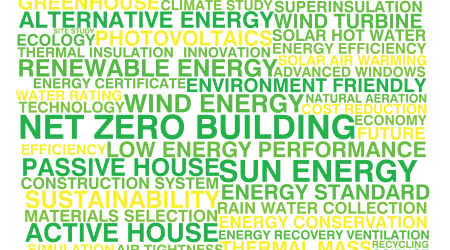Net Zero Energy Buildings: Success Stories
Real-world projects in Wisconsin and California show the practicalities of getting to net zero energy.
Gundersen Health Systems in Wisconsin has come close to achieving net zero energy for its network hospitals, medical clinics and nursing homes through a combination of conservation, geothermal energy, solar photovoltaics, solar hot water, biomass and other methods. The company estimates that it saves $3 million per year through these energy-saving measures, an appealing prospect for any building owner that might be hesitant to make the upfront investment for sustainability measures. This has the added benefit of promoting the health of the people in communities surrounding its facilities by producing fewer emissions. Gunderson has measured significant improvements in the air quality surrounding its buildings since the program was put in place.
The New Buildings Institute reported that private sector investments have spurred a 700 percent increase in net zero energy buildings since 2012, with education, office and multifamily facilities comprising 72 percent of these buildings. More mixed-use projects are also entering the mix. The Boulder Common’s mixed-use project, which encompasses office, restaurant and retail space in two adjacent buildings, is one of the largest multi-tenant net zero energy buildings in the country.
There is no doubt there has been greater demand for net zero energy buildings in recent years. The County of San Diego has committed to making all of its new buildings net zero energy. The county's first net zero building, the Alpine Branch Library, uses photovoltaic panel systems that include solar panels to absorb light, a solar inverter to change the electric current from DC to AC and a solar tracking system to monitor and optimize performance. Low-flow faucets and toilets to help minimize indoor water use, while drought-resistant landscaping and greywater re-use help to decrease outdoor water consumption. The new building is four times the size of the previous building, but less costly to operate because of the net zero energy designation.
While net zero energy might not be the right fit for every commercial real estate project, it is certainly something that building owners and managers should consider and speak to their builder about. Between the significant cost savings, environmental benefits and other incentives, it’s clear that net zero energy is the future of commercial real estate construction.
Richard Freeark is chief operating officer of C.W. Driver Companies, a premier builder serving California since 1919. In 2019, the general contracting firm proudly celebrates 100 years of service. As a leader in general contracting and construction management services, C.W. Driver Companies are on the cutting edge across a broad spectrum of industries, including education, commercial/office, technology, healthcare/biomedical, mixed-use, assisted living, entertainment, retail, industrial and civic. Freeark can be reached at rfreeark@cwdriver.com or 619.696.5100.
Related Topics:














